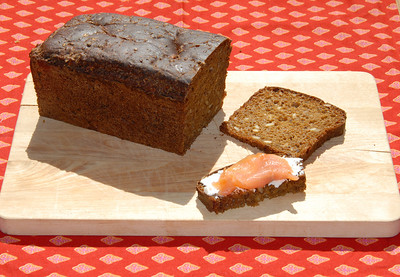
Before visiting Sweden last year, I didn’t devote much time to the country’s cuisine. Sure, I had thumbed through chef Marcus Samuelsson’s “Aquavit” cookbook and watched his and Andreas Viestad’s food shows on PBS. Yet, I still only had vague notions about Swedish cooking. At best I envisioned smoked salmon, pickled herring, and brilliant red lingonberries. At worst I thought of small meatballs drowned in thick, brown gravy.
While Swedes do consume these classics, I learned that they also dine on a plethora of enticing and unique dishes. Featuring ingredients from the forest and the sea, their fare showcases some of the best culinary aspects of the country.
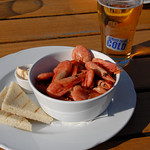 Thanks to rugged coastlines and a wealth of seafood, folks here know how to prepare crustaceans and fish. One of the most beloved, crayfish, even has its own seasonal feast. In August outdoor crayfish parties — with colorful paper lanterns, tablecloths, plates, bibs and hats — are all the rage.
Thanks to rugged coastlines and a wealth of seafood, folks here know how to prepare crustaceans and fish. One of the most beloved, crayfish, even has its own seasonal feast. In August outdoor crayfish parties — with colorful paper lanterns, tablecloths, plates, bibs and hats — are all the rage.
While crayfish has been a national delicacy since the 16th century, these celebrations didn’t begin until the 1800s. Over the years, though, the preparations have remained much the same. Boiled in mixture of salt, beer, and crown dill and then chilled, the crayfish are served alongside crisp bread, a strong cheese such as Vasterbotten and alcohol such as beer, schnapps or aquavit.
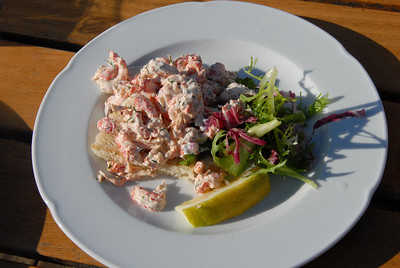
Whether boiling crayfish, smoking the ubiquitous salmon, or poaching perch and char, Swedish cooks have conjured up a slew of creative seafood recipes. Take, for instance, toast skagen. Invented after World War II by a Swedish restaurateur, it reminds me of a creamy, open-faced lobster roll, sans lobster or roll. An open-face sandwich, toast skagen features heaps of steamed shrimp piled onto crustless toast. It works perfectly as an appetizer or a light main course.
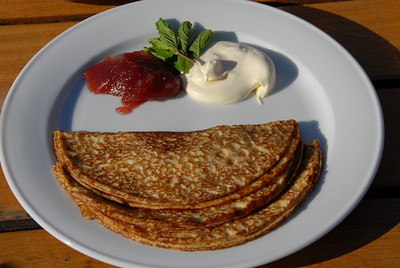
Along with creative recipes, the country has some unusual culinary customs. Thursday in Sweden is “pea soup and pancake day.” Followed by a dessert of thin pancakes and preserves, pea soup is consumed in homes and served to military conscripts and office workers across the land. Skip this practice from the Middle Ages and you’ll miss out on the highlight of the 21st century work week.
A holiday that I wholly embrace is”Kanelbullens Dag” or Cinnamon Roll Day. Held on October 4, Cinnamon Roll Day toasts the soft, slightly sweet, cardomom-scented cinnamon bun. In Sweden pretty much every day is Kanelbullens Dag for me. Have them for breakfast, lunch, or as a light snack, or with strong, black coffee, a glass of red wine . . .. I stocked up on pearl sugar and kanelbullar recipes so that back at home each day can continue to be cinnamon roll day.
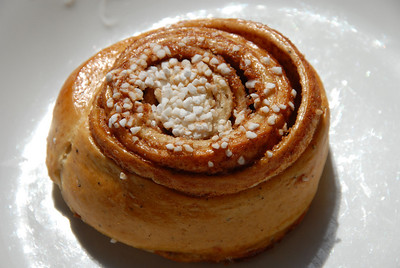
Kanelbullar – from Carl Jan Granqvist’s and Lena Katarina Swanberg’s “Swedish Culinary Classics: Recipes with History and Originality” (Swedish Institute, 2005)
Makes 25 buns
For the dough:
1 ¼ ounces yeast
3 ½ ounces sugar
1 ½ cups milk
1 egg
4 ounces butter
1 teaspoon salt
1 tablespoon ground cardamom
26 ounces wheat flour
For the filling:
4 ounces butter, at room temperature
2 ounces sugar
2 tablespoons cinnamon
For the glaze:
1 egg
2 tablespoons water
pearl sugar
Crumble the yeast into a large bowl and stir in a few tablespoons of milk. Melt the butter and pour it over the yeast-milk mixture. Add the rest of the ingredients for the dough and, using an electric mixer, mix with a dough hook for 10 to 15 minutes. Cover and let the dough rise at room temperature for 30 minutes.
Roll out the dough so that it is about 1/8-inch thick and 12 inches wide. Spread the room temperature butter on top of the dough. Mix together the cinnamon and sugar and sprinkle it over the buttered dough.
Fold the dough over, roll it out lengthwise and cut into about 25 slices or circles. Place the slices with the cut edge facing upwards on a baking sheet. Cover with a towel and allow them to rise for about an hour or until the buns have doubled in size.
Pre-heat the oven to 425 degrees Fahrenheit.
Beat together the egg and water. Brush the mixture on the top of the buns and sprinkle pearl sugar on top of each. Bake in the oven for 5 to 6 minutes. Allow the buns to cool on a rack and serve with coffee, tea, milk or even wine.